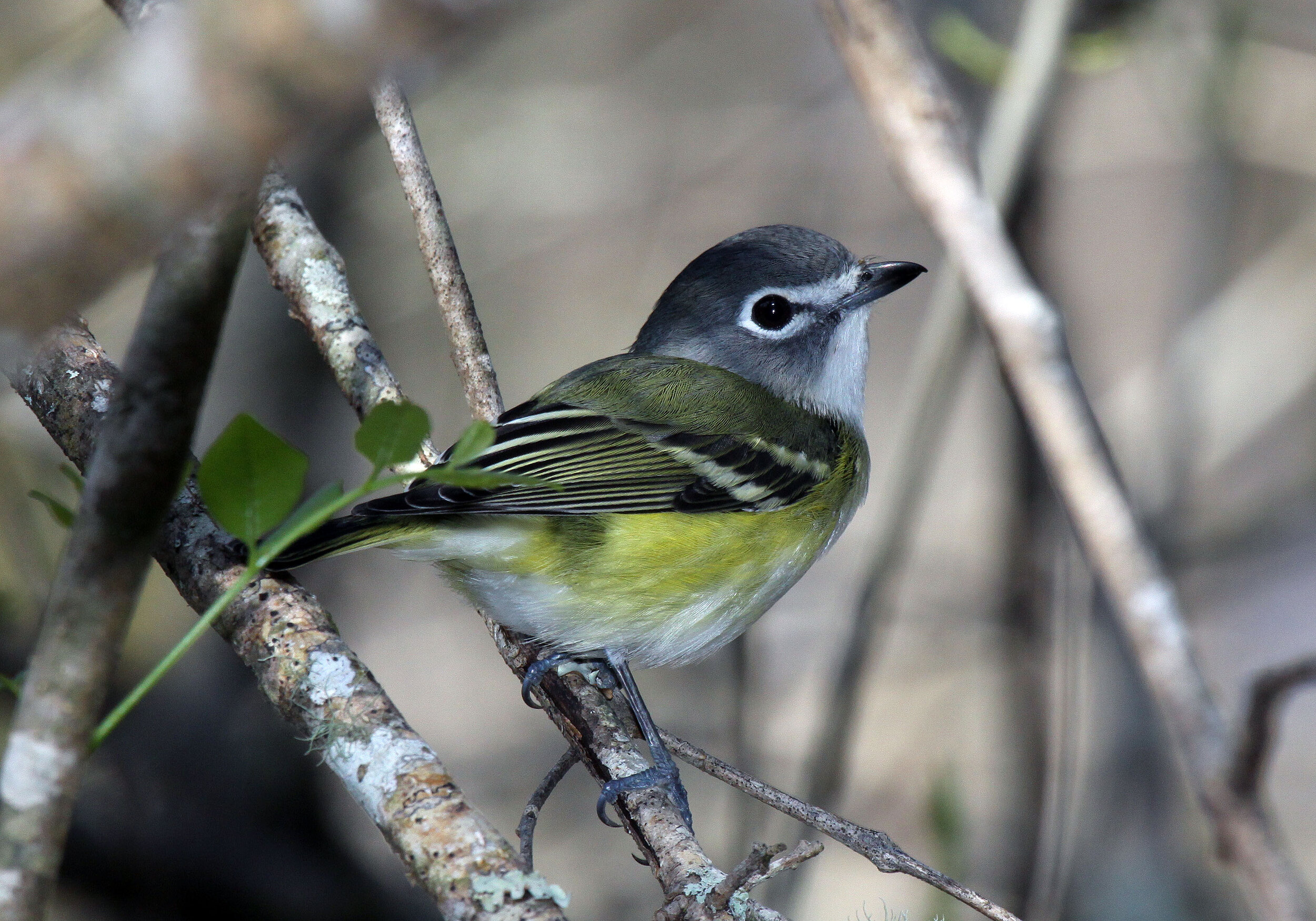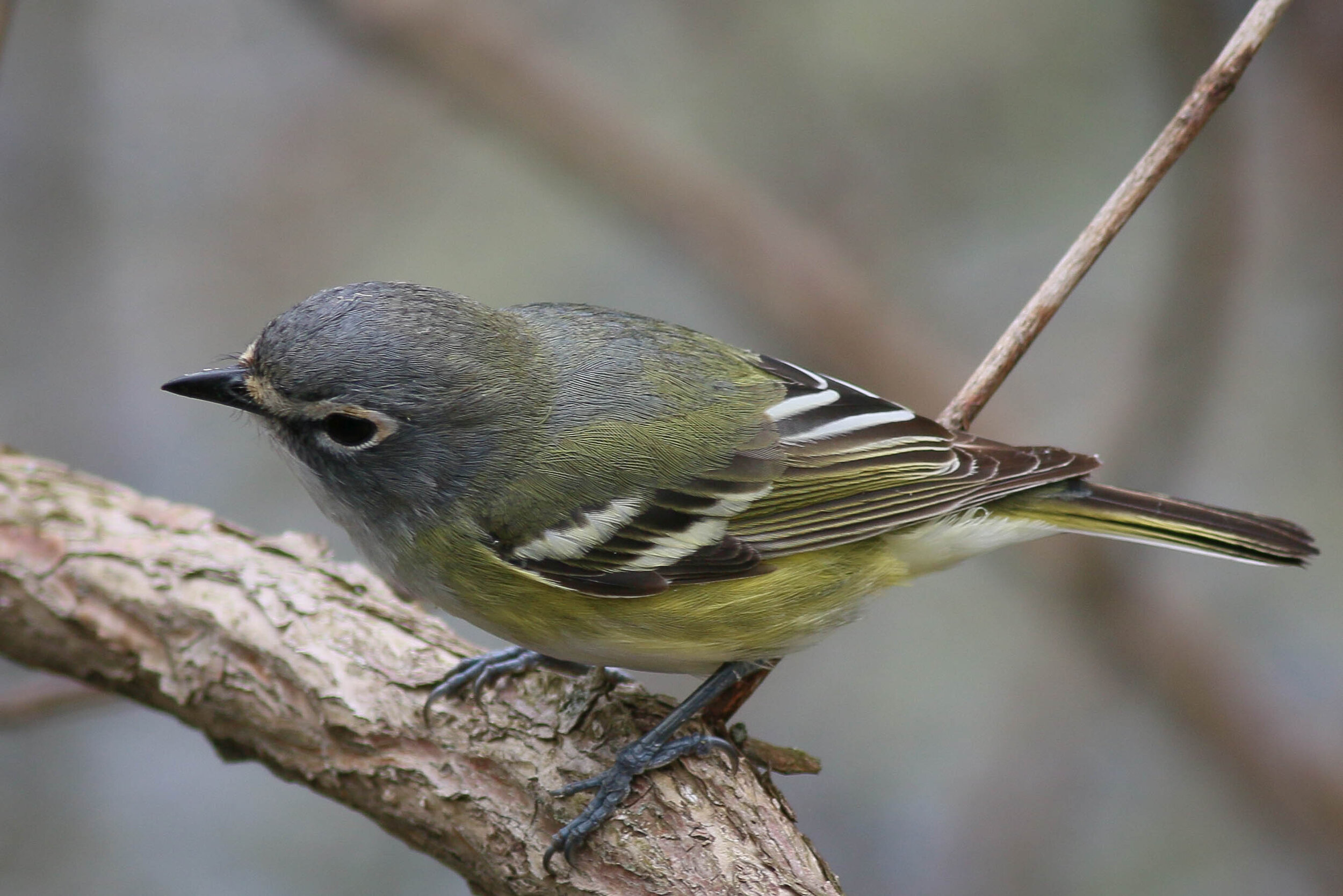In many ways, the blue-headed vireo is anomalous among passerines. Its Latin name (Vireo solitarius) hints at its former common name (Solitary vireo), and these birds live up to their solitary reputation, with males defending wide-ranging territories of northern forestland, up to 15 acres at a time. Additionally, males will build many nests as part of their courtship behavior, with the female finally choosing the male with the best-built nests and most well-defended territory. Perhaps due to the male’s outstretched territory and nest building, the female actually weighs more than the average male, which is rare in songbirds.
Another distinguishing characteristic is the blue-headed vireo’s call note while on the nest, allowing researchers easier detection of these birds on their breeding grounds. This bird’s typical song slightly resembles the red-eyed vireo, but Roger Tory Peterson has called it “more deliberate, softer, and sweeter.” Learning the intricacies of vireo song and plumage can be a launchpad into advanced birding, and as this article writes, the red-eyed vireo—which ceaselessly sings all summer long in eastern forests—is the basis for differentiating vireo songs.
While breeding bird survey routes in northern Wisconsin have shown slight increases in the abundance of blue-headed vireos, their outlook is not all positive. Numerous factors will threaten this bird in the coming decades. At the forefront is climate change. National Audubon’s new Climate Report shows dire predictions for hundreds of North American bird species. An interactive online tool allows you to see the impacts to birds in your zip code, and a look at the blue-headed vireo shows a huge range reduction and movement north (below, photo courtesy of Audubon.org/climate/survivalbydegrees).











